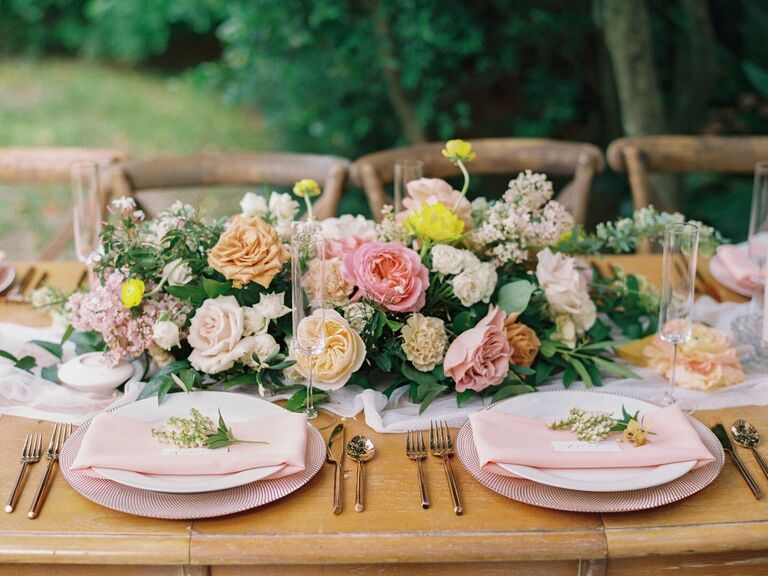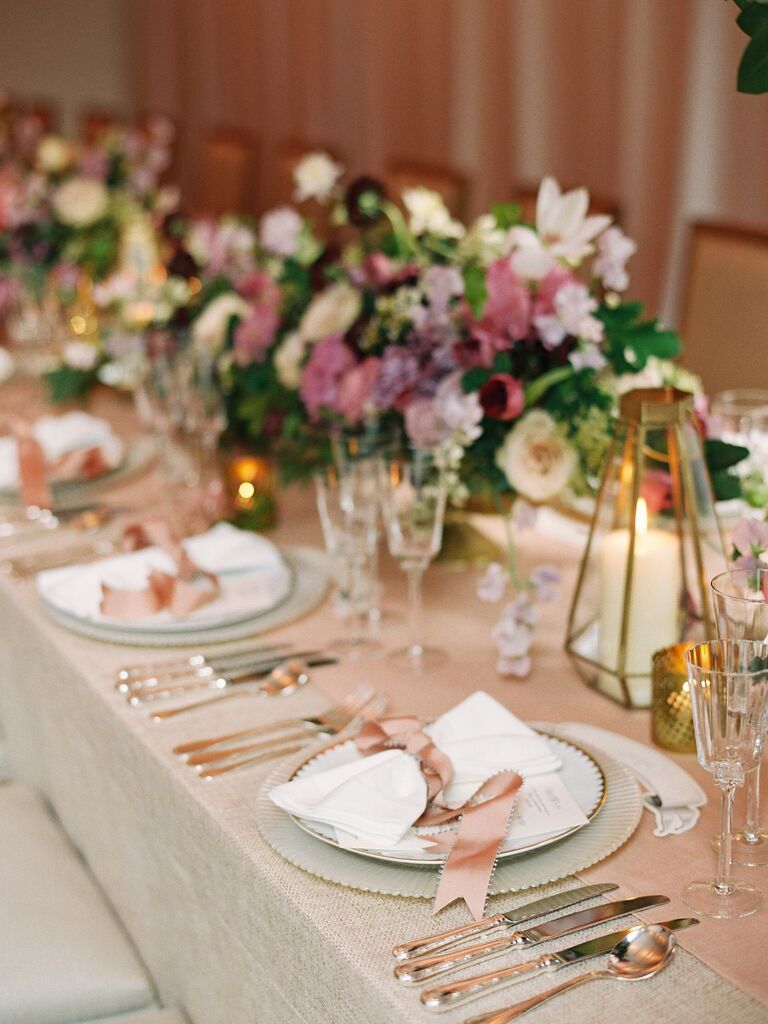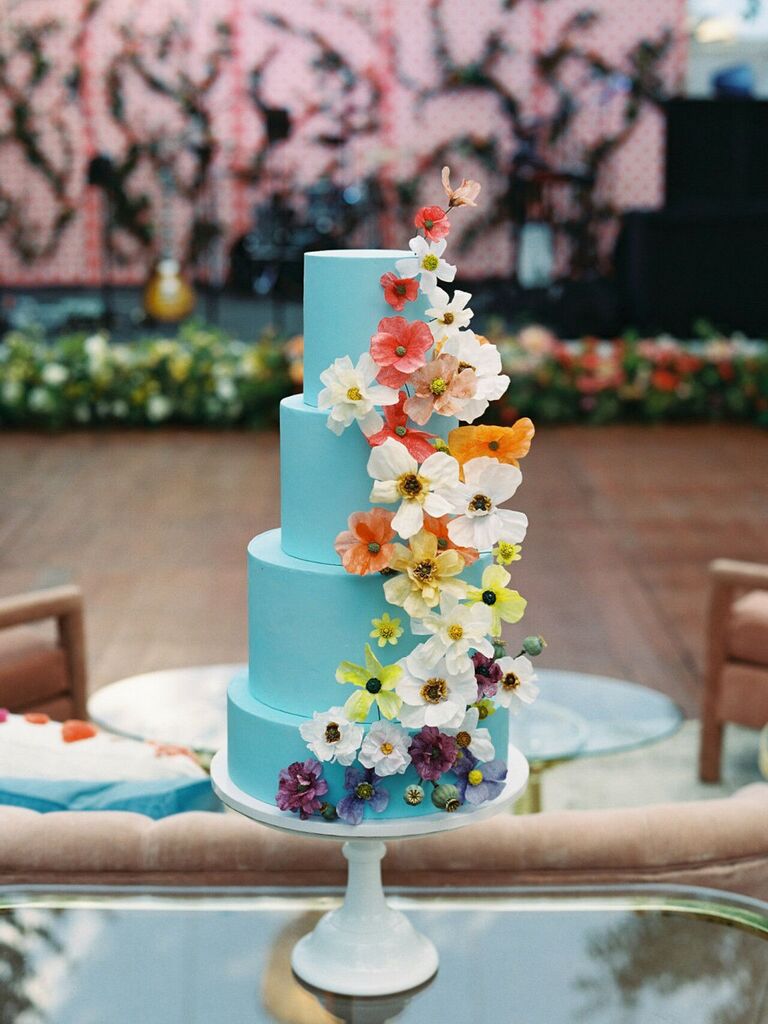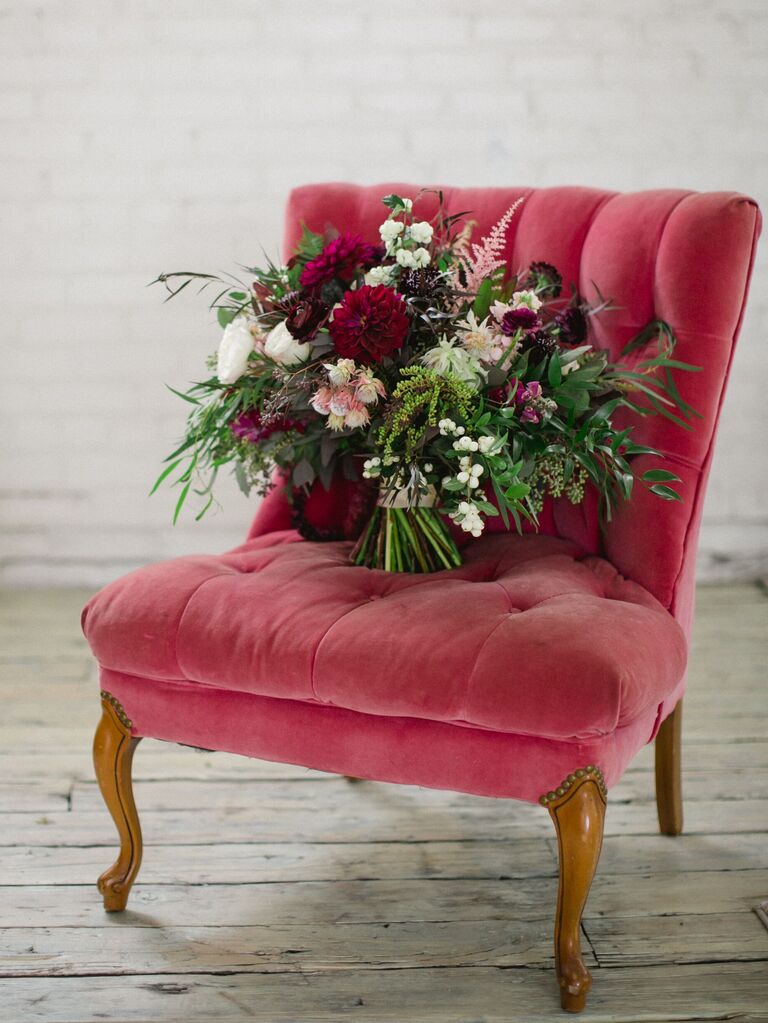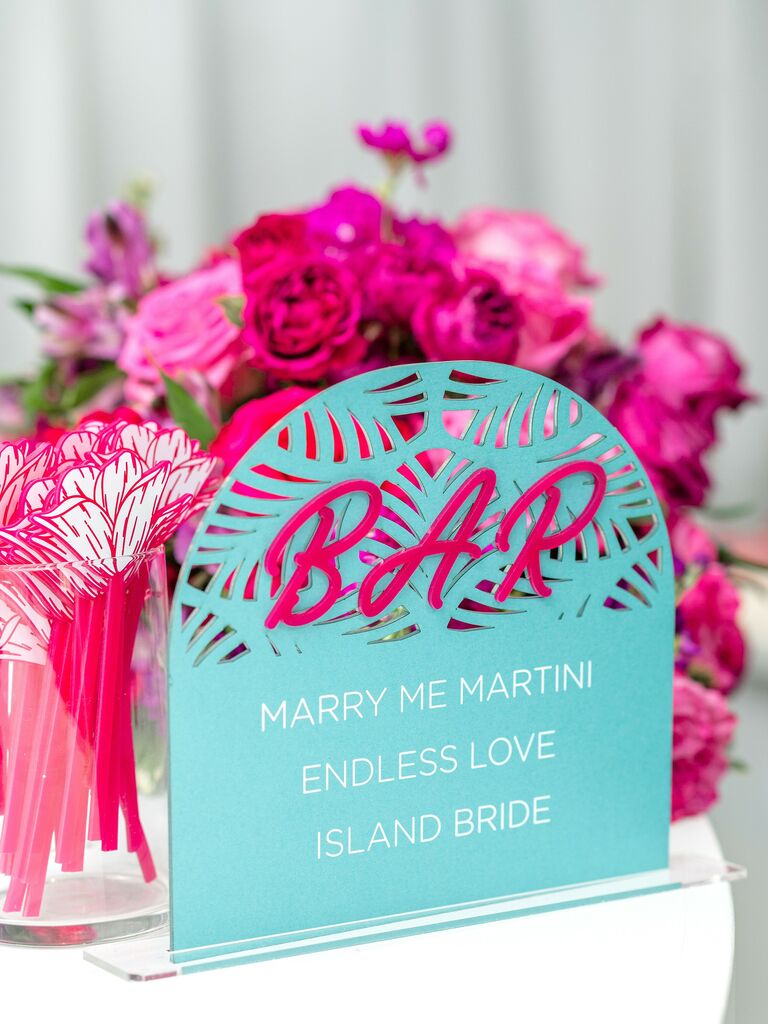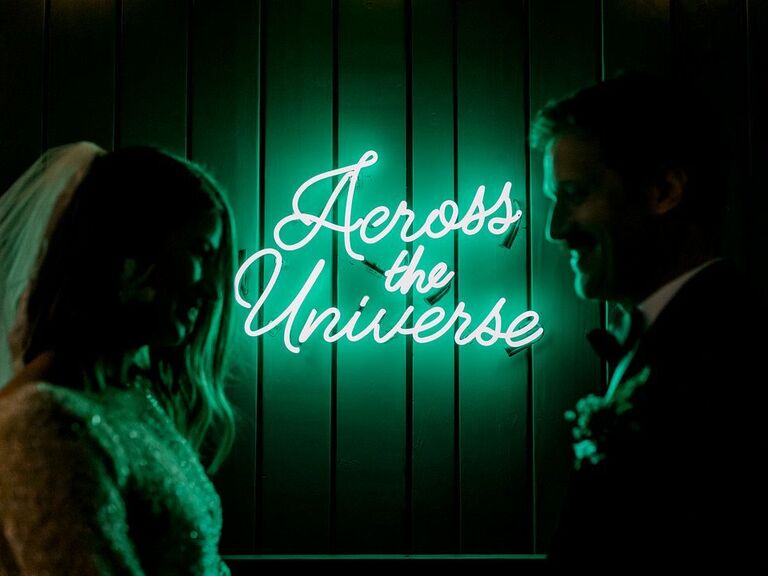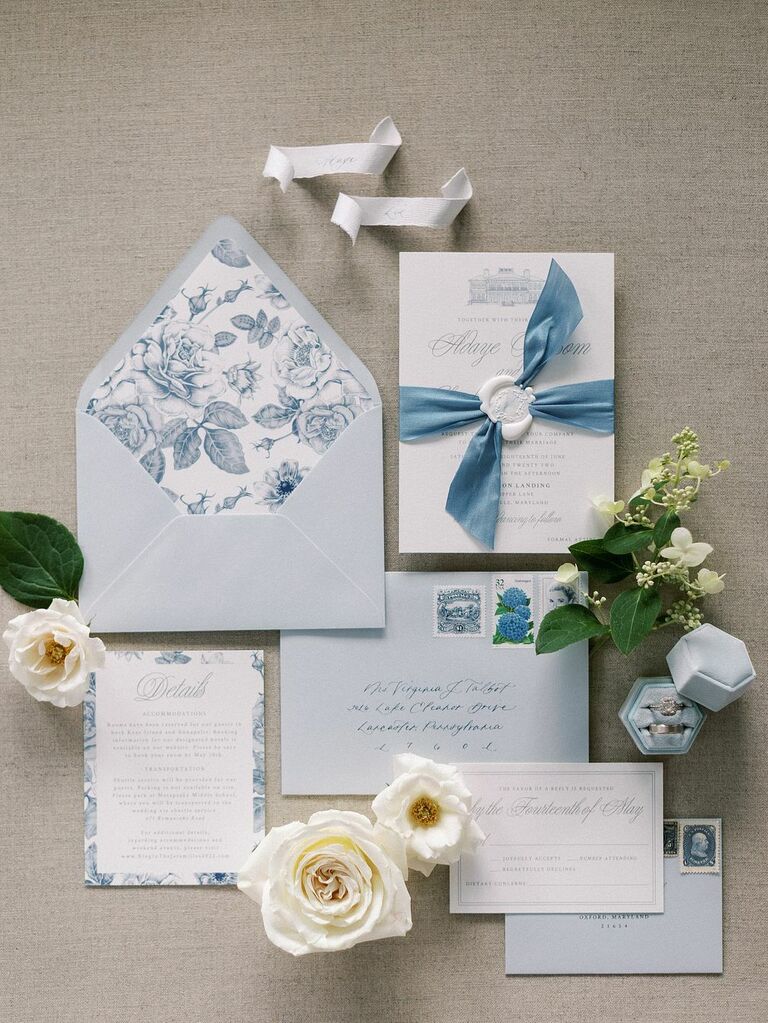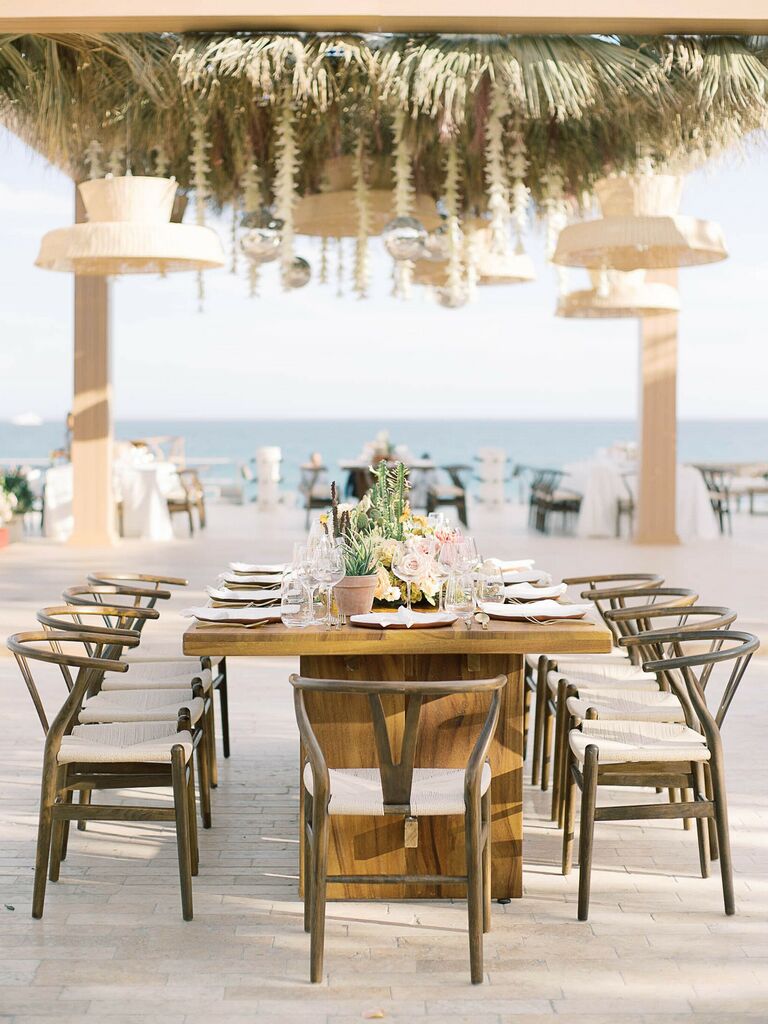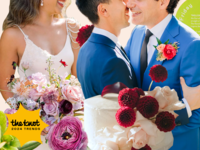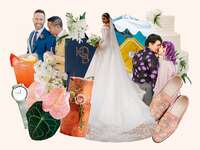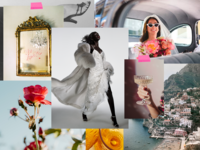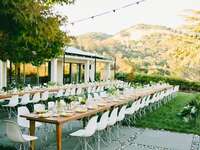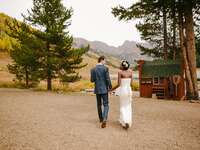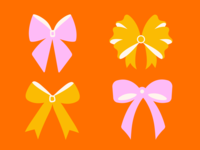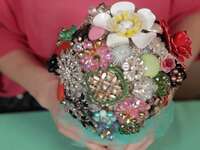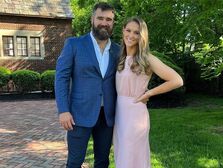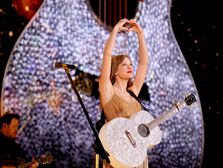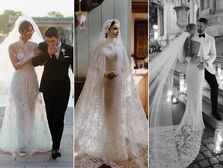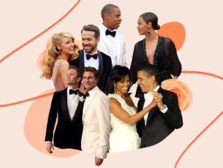How to Pick Your Wedding Color Palette from Start to Finish
You probably already know that your wedding color palette is important, but before you can start the bulk of your wedding planning journey, you actually have to go through the process of choosing it (something you'll want to tackle early on, trust us). Knowing exactly how to pick wedding colors might seem like a no-brainer at first—you choose a handful of colors you like and leave it at that, right? While that's partially true, there are a few other things you'll want to consider before deciding on a final wedding color combination, such as your wedding season, the formality of your event and your overall aesthetic. To help you narrow down the best color choices for your big day, we're explaining all of this and more, including a list of the most popular wedding colors you can use for inspiration when it's time to bring your own celebration to life.
In this article:
What Is a Wedding Color Palette?
A wedding color palette (also called a wedding color scheme or wedding color combination) is a collection of colors that are used in various ways throughout your wedding day. Your wedding colors tie into almost every facet of your wedding, from the wedding stationery to the floral arrangements, table linens, attire, cake design and sometimes even unexpected details, like your signature cocktails or wedding favors.
A carefully chosen color palette is essential when it comes to creating a cohesive wedding theme, but if you're worried that working with specific colors will feel too limiting, we've got good news. Contrary to almost every wedding rom-com in existence, gone are the days of matching paint chips and fabric swatches to dinner plates, centerpieces and dresses. Instead, your wedding color palette should serve as a general guide for the feel of your wedding day—for example, do you want to use pastels to create an airy, romantic setting, or layer dark jewel tones for a dramatic, regal effect? Rather than focusing on two or three of your favorite colors, opt for a color family instead, such as light shades of blue or classic neutrals. This will help you achieve a wedding color palette that feels layered and dimensional without worrying about everything matching perfectly.
You should start thinking about your wedding colors, or at the very least, your ideal wedding style, shortly after you get engaged. (No idea where to begin? Take The Knot's Wedding Style Quiz to see our recs.) Even though you might not pinpoint your exact wedding colors right away, having a ballpark idea of your general theme will help steer you when it comes to choosing the wedding venue and setting a date. For example, if you love bohemian earth tones, you might want to consider an outdoor venue instead of a formal banquet room. If you gravitate toward bright citrus-y colors, that could hint at a summer wedding instead of a winter event.
How to Pick Your Wedding Colors
Once you've finalized your wedding color palette, all of your other details will begin falling into place. Here's how to get started.
Get inspired by your setting.
First things first: location. As we mentioned, it's a good idea to have a wedding color palette in mind as you start your venue search. Think about what colors you'd like to use, and decide whether you'd want to prioritize finding your perfect venue or having your dream color palette. The good news? You can often have both, especially when you consider certain types of settings. Venues like converted warehouses, refurbished lofts and outdoor locations are often 'blank slate' venues, which means you can add as much or as little as you'd like to carry out your wedding vision and really personalize the space.
If your prospective wedding venue has a lot of decorative elements already in place, use those details to influence your color scheme. Whether it's the colors of the carpet, the paint on the walls, the modern lighting fixtures or the stunning view, even the smallest things can spark an idea. Choosing colors that complement your venue will enhance what you love most about the space (without clashing visually).
Keep your wedding must-haves in mind.
While your wedding venue is a major influence when you're figuring out how to pick wedding colors, you'll also want to consider other non-negotiables that are already on the table. For example, if you've always dreamed of having wedding flower arrangements overflowing with sunflowers, you'll need to include yellow somewhere in your palette. Use your must-haves as a starting point, rather than trying to figure out how to incorporate them into your wedding later on. You don't want to finalize a color scheme only to find that a must-have (like your grandmother's hand-embroidered table runner) looks out of place or gets lost in the rest of the decor. And of course, make sure to communicate these required elements to your wedding pros, particularly your florist.
Think seasonally.
Just like your everyday wardrobe, your wedding colors can (and should) reflect the time of year that you're saying "I do." That's not to say that you can only use certain colors during certain seasons, but the trick is how you style them. If pink is your ideal wedding color, a soft rosy version is perfect for spring, while bright coral is a summer wedding staple. For fall, a purple-pink fuchsia pairs well with other jewel tones, while muted mauve and silver are a pretty wintry combo. Adding accent colors can also help lighten or darken your color palette for different seasons.
Set the mood.
Your wedding colors have a huge impact on the vibe for your special day. If you're going for a fun, lively atmosphere, you'll naturally want to include eye-catching colors, like bright pink, turquoise, red, or yellow. Leaning toward something timeless and understated? Basic tones like navy blue, black, ivory and metallic silver or gold will look lovely. Think about the style and atmosphere you want your wedding reception to have, whether it's relaxed, glamorous or something in between, and choose colors that put you in that mindset.
Look at what you love.
Still feeling a little bit unsure about where to begin when picking wedding colors? Look at the colors that you already surround yourself with. From your closet to your home decor, the colors that show up most often in your life are likely the colors you'll be happy with for a long time (i.e. when you look back at your wedding photos in two decades), so they're a great place to start. Plus, it's an extra perk to repurpose leftover wedding items, like vases and linens, if they already match your decorating style. Another tip: Save your favorite real weddings using The Knot app, or start creating a wedding mood board or Pinterest board filled with images that inspire you (this is just for fun—they don't need to be wedding related!). After you've bookmarked a few dozen ideas, look for patterns in terms of color or style. This will give you a glimpse into the aesthetic that you're subconsciously drawn to, which is a good starting point for choosing your wedding color palette.
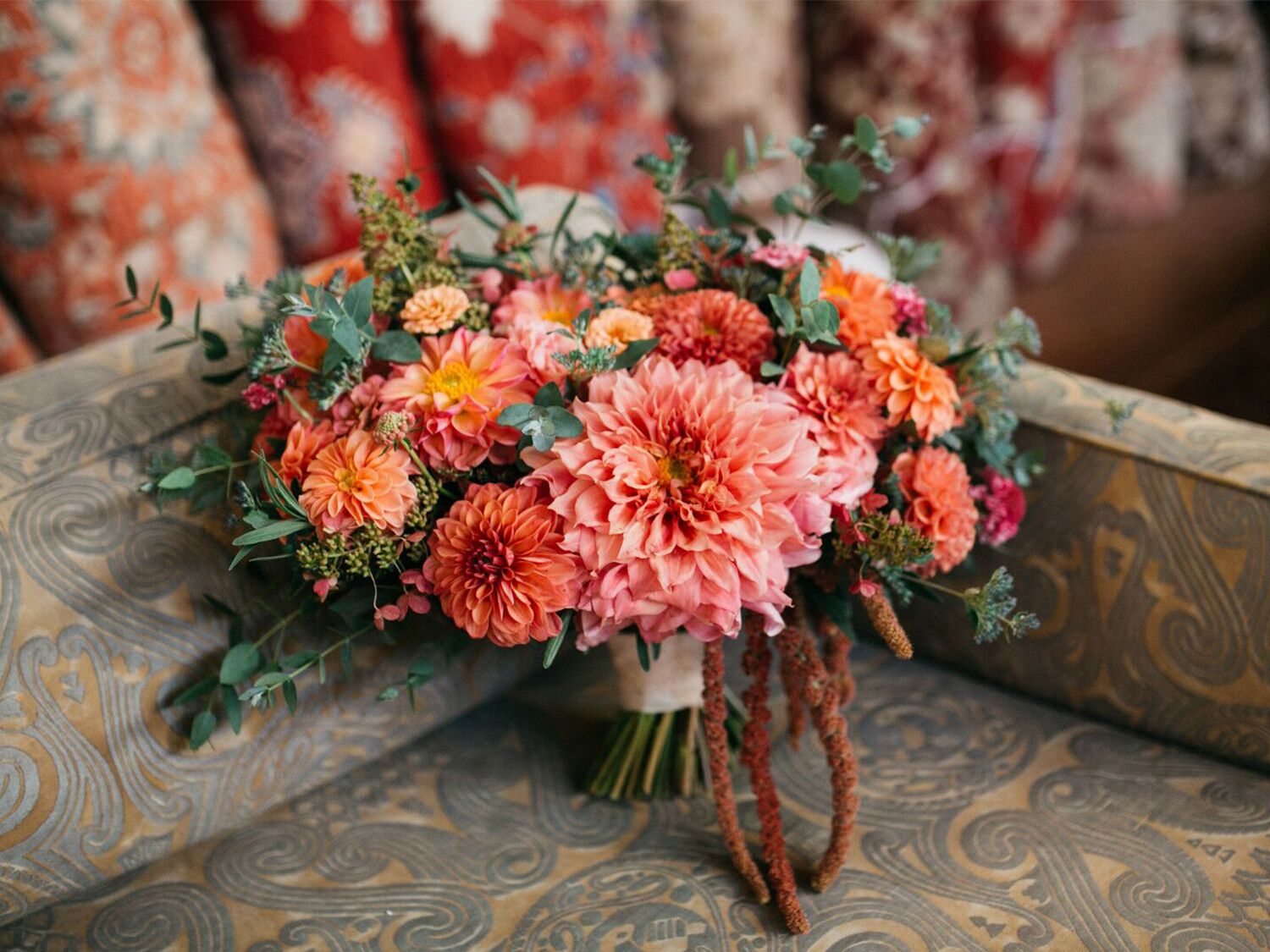
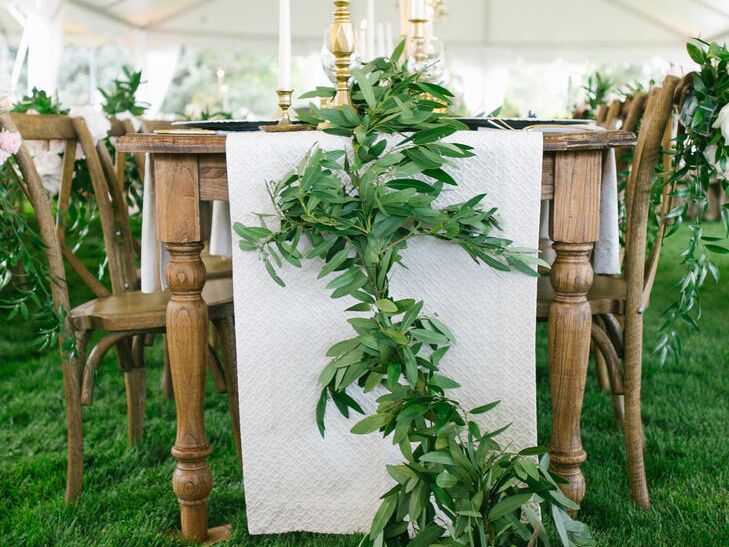
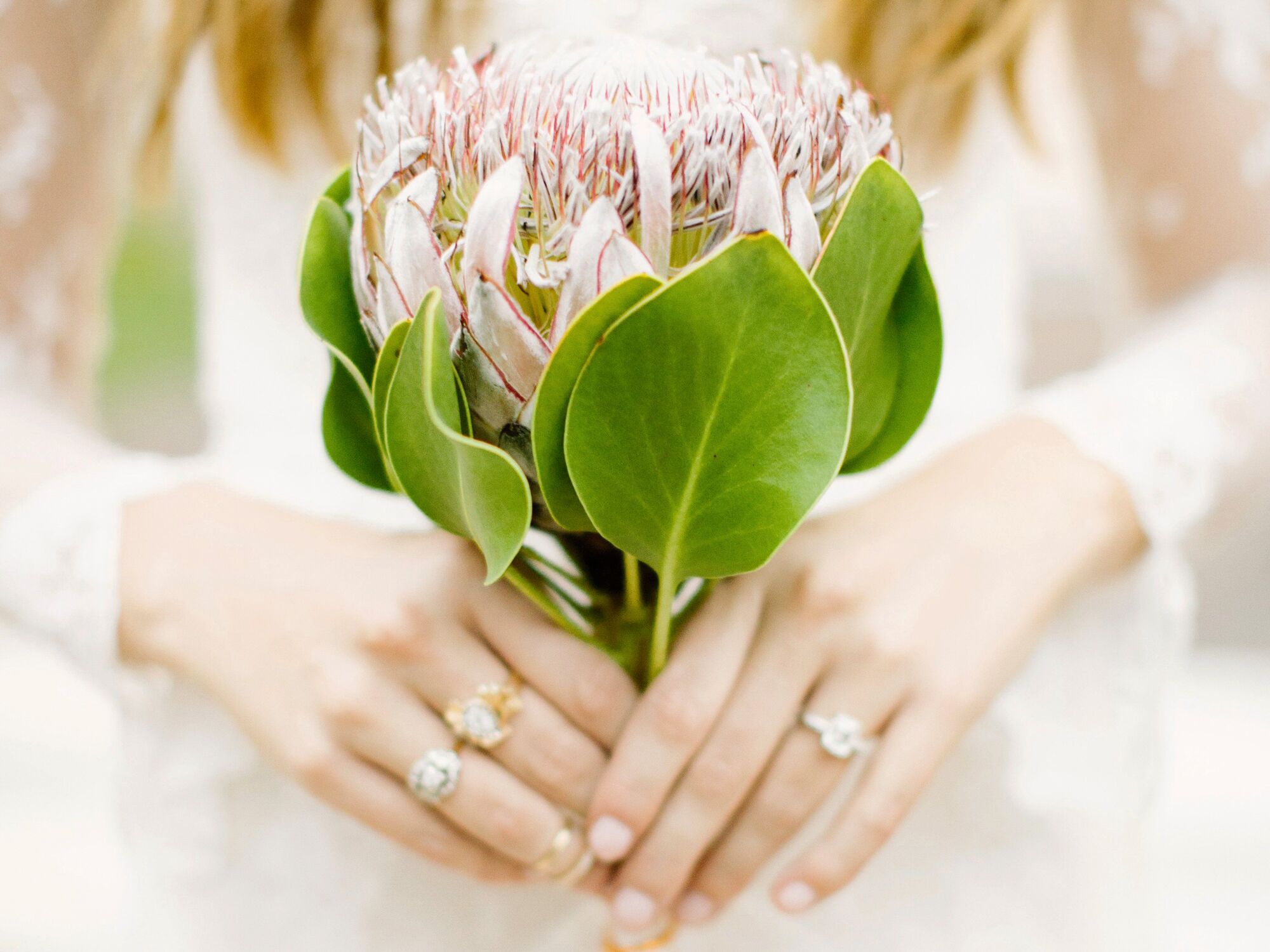
Do some extra research.
Home decorating magazines, fashion blogs, art galleries and friends' weddings are all great sources for inspiration. While you wouldn't want to choose a trendy wedding color combo that doesn't also speak to your personal style, thinking outside the box and using fashion or interior design to inspire you may help you see colors you already love in a new way.
Consult the color wheel.
You don't need a degree from art school to pick your wedding colors, but there are some basic principles to follow. Typically, colors that go well together are opposites across from each other on the color wheel, because they pair cool and warm tones together (for example, terracotta orange and sky blue). Other color pairings that work are "neighbors"—they're similar to each other and share a primary color (think: peacock blue and sage green, or lilac and blush). A classic way to build your color palette is by pairing a heavily saturated color with a neutral, like taupe or ivory, and then adding softer complementary colors.
Don't overthink it.
It's easy to get caught up in the idea that you have to have a strict color scheme, but if you're feeling the pressure to pick the right hues, remember that your wedding palette isn't the be-all and end-all. While your wedding colors will inform a lot of your other decisions, like your flowers and your decor, you should use them as a guideline instead of a rule. Not every part of your wedding has to match perfectly—and in fact, a tonal color palette often looks more sophisticated than a matchy-matchy one, so don't stress about getting every detail color-coded just right.
Wedding Color Palette Ideas
You've learned the basics about how to pick wedding colors—now it's time to think about choosing your own palette with the help of real-life wedding color inspiration. Start with these tips.
1. Spring Wedding Colors
If you're getting married between March and May, a spring wedding color palette will help you incorporate the season into your decor. Springtime is all about rejuvenation and happiness, so we recommend choosing colors to reflect those lighthearted vibes. Soft hues like blush, sky blue, yellow, lavender and ivory are some of the most popular spring wedding colors, since they're reminiscent of a blooming garden and evoke a romantic feeling.
2. Summer Wedding Colors
June through August is the perfect time of year for bright, energetic hues. Summer wedding color palettes often include ultra-saturated tones, like hot pink, lime green, orange and turquoise—even just adding one of these colors will give your palette a fun boost. If you need even more wedding color inspo, turn to summer fruits like lemons, cherries, grapefruits and mangoes (we love the idea of using fresh fruits in your centerpieces).
3. Fall Wedding Colors
From pumpkin-inspired orange hues to earthy browns and greens, fall wedding color palettes are all about drawing inspiration from nature. Depending on exactly when you're getting married, you can add colors from the adjacent season—for example, an early fall wedding in September can include one or two summer colors, while a late fall wedding in November might feature darker, wintry tones.
4. Winter Wedding Colors
Winter wedding color palettes can range from holiday-inspired combinations (like red and green or blue and silver) to elegant metallics or neutral tones. Because winter days are so short and the days tend to be a little dreary, it's important to balance any dark colors in your palette with at least one lighter accent color. This prevents your color palette from feeling too heavy or harsh.
5. Pink Wedding Colors
Call it a pink renaissance. From Barbiecore to magenta—the Pantone Color of the Year—pink is one of the most popular wedding colors of the moment. Whether you love the vibrancy of hot pink and fuchsia tones, or soft blush and mauve pinks are more your style, there are so many different ways to tap into a pink wedding color palette. Another perk: you'll have dozens of pink wedding flowers to choose from, including peonies, roses, anthuriums, hydrangeas, ranunculus and more.
6. Green Wedding Colors
We like to think of green wedding color palettes as unsung heroes, because they really can do it all when it comes to your wedding style. Dark emerald green is perfect for creating a glamorous, classic look, while sage green and olive green tones are more bohemian and ethereal. And while green pairs easily with other cool colors (like blue and silver), it also looks beautiful alongside neutral ivory, beige and gold.
7. Blue Wedding Colors
Whether your wedding theme is formal, beachy or something in between, blue is always a good choice. Depending on how you style it, a blue wedding color palette works for nearly any wedding season and setting—a palette of pale blue and silver will give your wedding a celestial theme, while a combination of pale blue and yellow says beachy summer wedding.
8. Pastel Wedding Colors
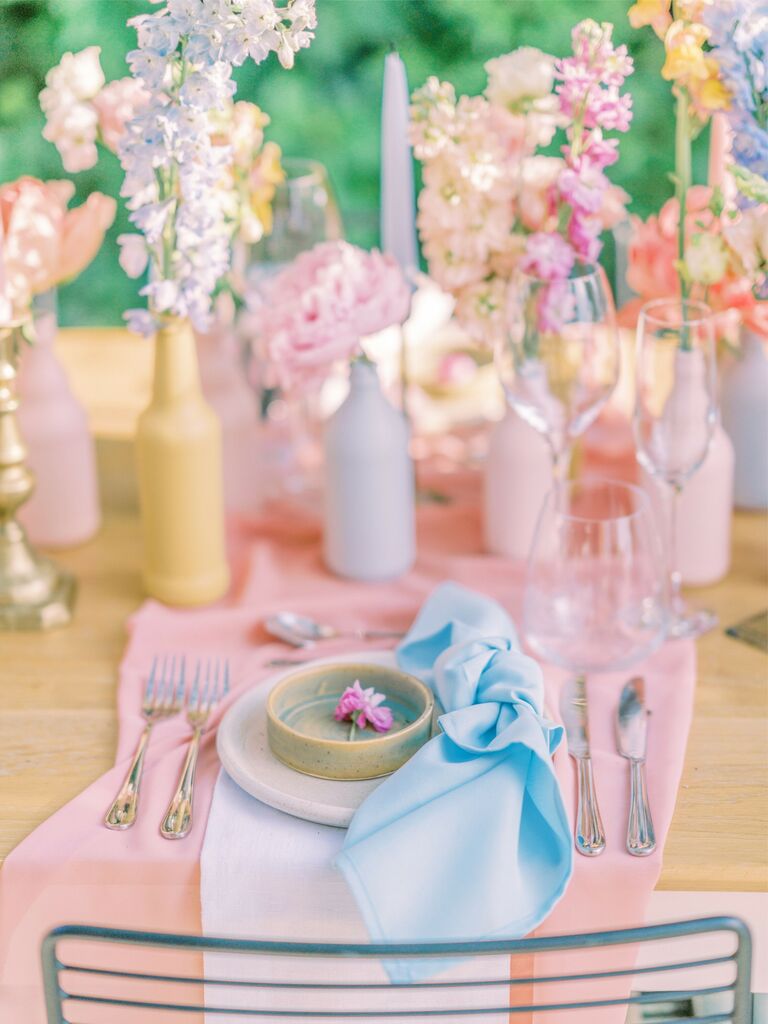
Typically associated with spring weddings, pastel wedding color palettes include colors like light purple, pale pink, dusty blue and mint green. By adding complementary dark colors—for example, accenting lilac with raspberry or burgundy—you can transform a pastel palette for other seasons. Earthy neutrals and timeless colors, like black and white, are other ways to round out a pastel color scheme.
9. Neutral Wedding Colors
Gone are the days of using ivory, cream and white simply as accents for other wedding colors. The neutral wedding color palette trend is here to stay, especially when it comes to boho weddings and minimalist themes. When you're using a neutral palette, adding interesting textures and details to your decor becomes more important than ever to make up for the lack of colors. Wooden elements, dried flowers, faux fur accents and shimmering metallic pieces will all help to create a multidimensional look.
10. Trending Wedding Colors
Just like flowers, fashion and other wedding trends, the top wedding colors have changed many times over the years. In 2022, metallic gold was the most popular wedding color according to our company data, with 39% of couples incorporating it into their color palette. Ivory, white and champagne, which are all classic wedding color palette picks, came in a three-way tie for second place. For 2023, wedding planners predict that bright colors and versatile neutrals will be everywhere, with pink, green and brown being named as some of the top wedding color trends.
